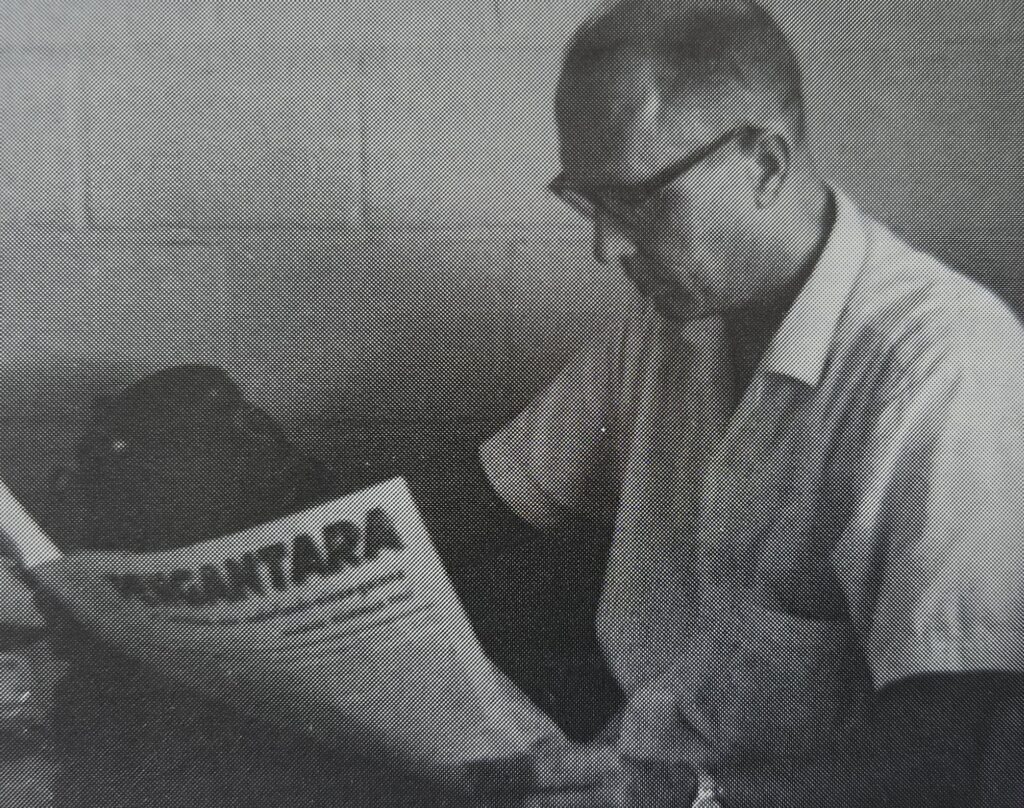Camp Columbia at Wacol played many roles during and after the Second World War. It was the headquarters of the United States Sixth Army, the training site of its Officers School, and by 1945 it had become the seat of the Netherlands East Indies Government-in-Exile. It was also the main centre for the Netherlands Indies Civil Administration (NICA), where Dutch officials gathered, trained and prepared for deployment back into the Netherlands East Indies and Dutch New Guinea.
One of those officials was Piet Johannes Merkelijn. His path from Brisbane to his first posting in Sarmi shows how Camp Columbia linked the Netherlands, Australia and New Guinea at a crucial moment in history.
Early life and training
Piet Johannes Merkelijn was born in 1918 in Magelang in the Netherlands East Indies. He received his secondary education in The Hague before enrolling in the first post-war Civil Administration Course at Leiden University in 1945. This intensive course prepared young administrators for service in the Indies and New Guinea, with subjects including Islam, history, Malay, Javanese, economics, law, customary law and anthropology.
Merkelijn was deeply influenced by the anthropologist Jan van Baal, later Governor of Dutch New Guinea, whose pre-war study of the Marind-anim people of southern New Guinea inspired him to seek a posting in the territory.
At Camp Columbia
In August 1945 Merkelijn travelled from the Netherlands via England to Australia. Disembarking in Brisbane, he entered the NICA camp at Camp Columbia. By then the camp had become the headquarters of the Dutch Government-in-Exile and the staging ground for officials like him. The former Officers School of the US Sixth Army provided an ideal setting for orientation, and it is likely that Merkelijn received further information and preparation there before being sent forward.
Camp Columbia thus became more than a temporary stop. For Merkelijn it was the bridge between his training in the Netherlands and his career in the Pacific.
Morotai and the money flight
From Brisbane Merkelijn was assigned to Morotai, a small island in the northern Moluccas captured by the Allies in 1944. Morotai served as a key base for the return of Dutch civil administration after the Japanese surrender.
On the way, Merkelijn was given an unusual assignment. Together with colleague Bert Wiebols, he guarded a B-29 bomber carrying one million guilders in freshly minted Dutch coinage, urgently needed to stabilise the post-war economy of the Indies. At Morotai, while awaiting his next posting, he was ordered to lead a small patrol enforcing rudimentary health measures along the coast — his first taste of administration in the field.
Sarmi: a first posting

Weeks later Merkelijn boarded a Royal Australian Navy warship bound for Sarmi, on the north coast of Dutch New Guinea, west of Hollandia (now Jayapura). The town had been devastated by Allied bombing during the war. There he witnessed the formal surrender of 4,000 Japanese troops under General Tanoye.
The Australian ship left once the surrender was complete, while Merkelijn and a small team of Papuan soldiers and Dutch officials remained behind to re-establish administration. With almost no resources, no archives and even makeshift lamps fashioned from Coca-Cola bottles filled with aviation fuel, Merkelijn later recalled the experience as being “a baby in the woods.”
Camp Columbia’s role
Merkelijn’s story illustrates the pivotal role of Camp Columbia. As the seat of the Netherlands East Indies Government-in-Exile and the main NICA hub, it linked Dutch training in Europe with the re-establishment of administration in New Guinea. From Brisbane, young officials like Merkelijn were channelled through Allied transport — sometimes on American aircraft, sometimes on Australian ships — into territories where Dutch authority was being rebuilt.
By tracing personal stories such as that of Piet Johannes Merkelijn, we see how Camp Columbia functioned as more than just a base. It was the gateway through which the Dutch returned to New Guinea, and where individuals began careers that bridged the Netherlands, Australia and the Pacific.
